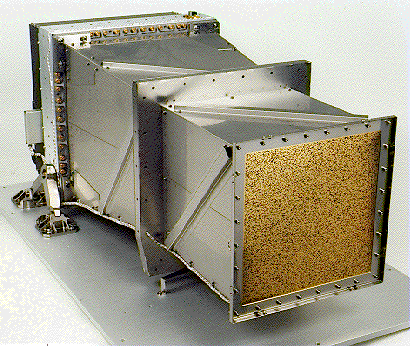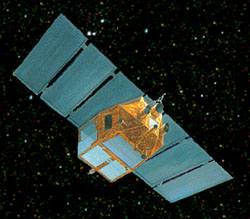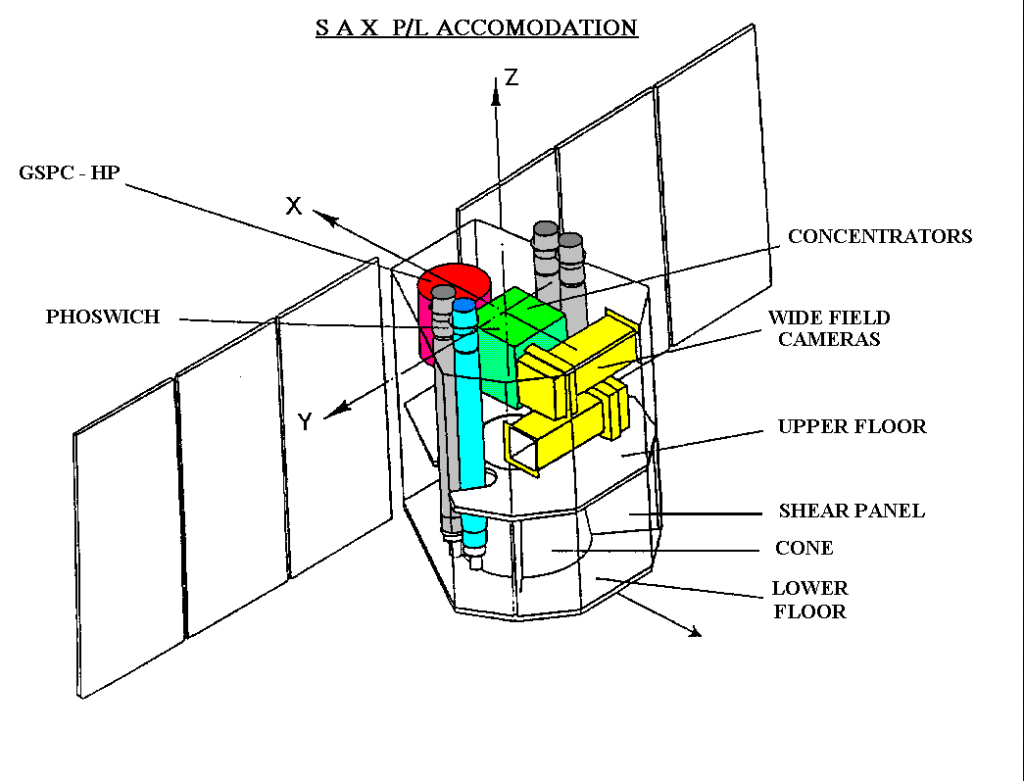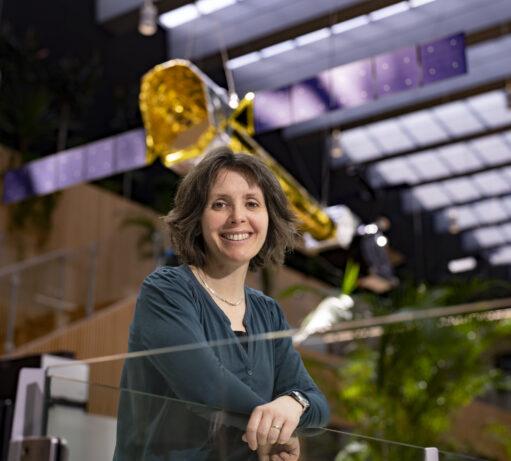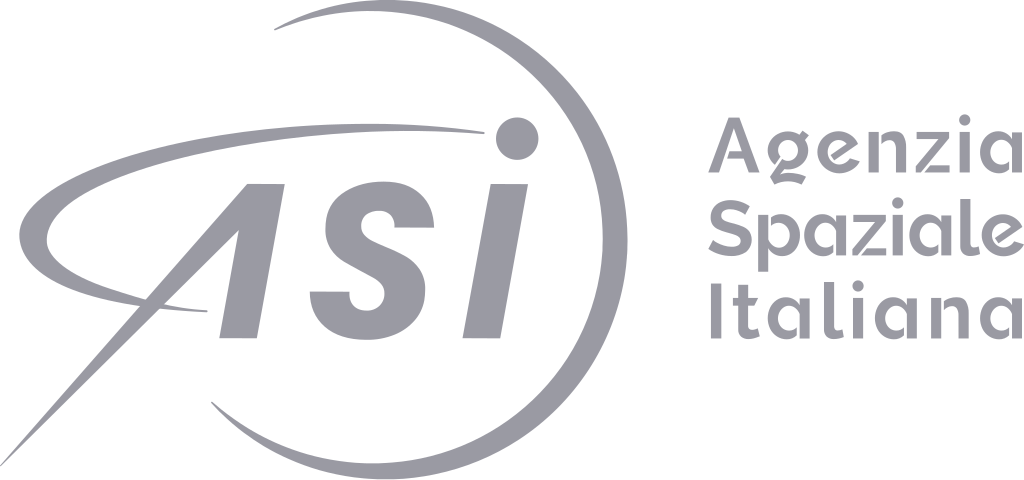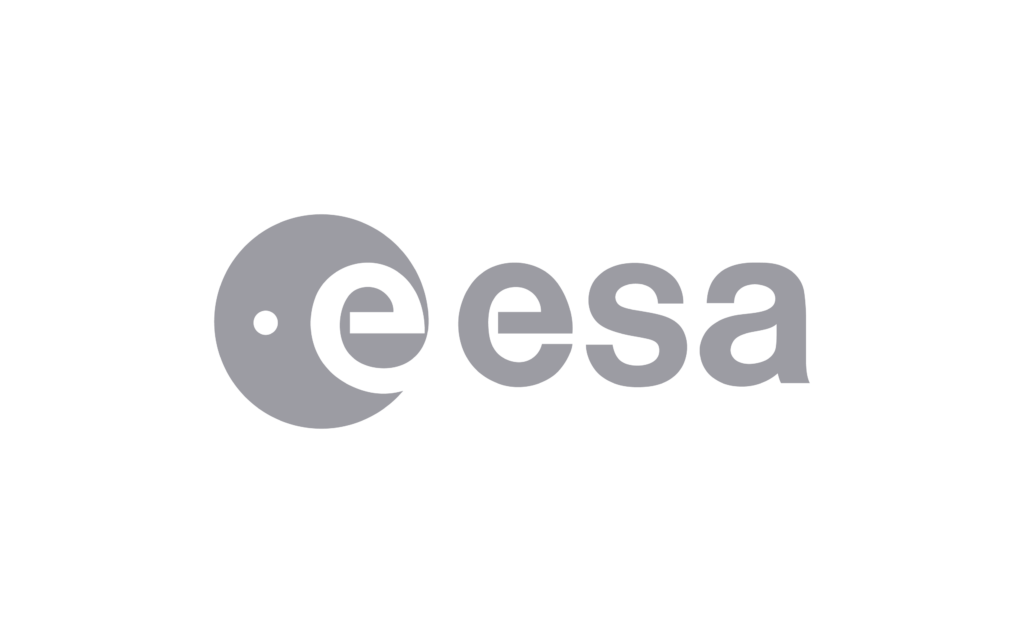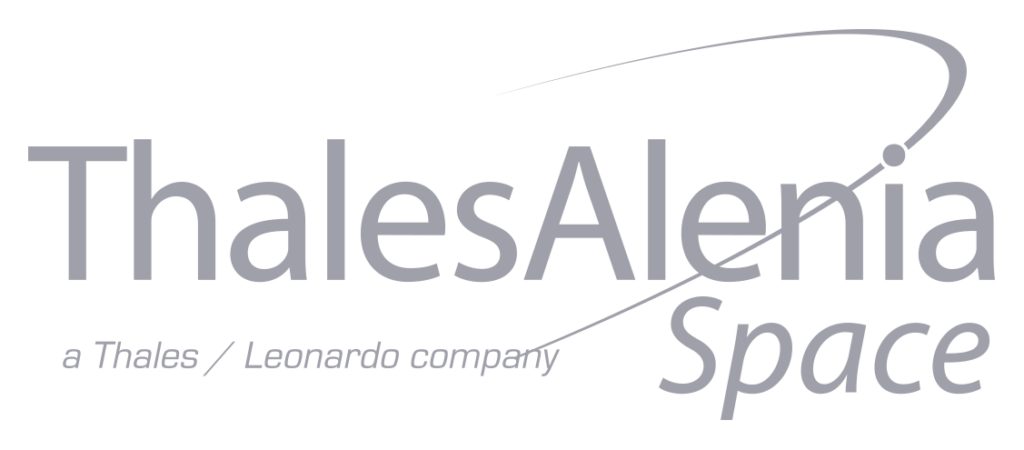| Status | Legacy |
| Launch | 1996 |
| Space organisation | ASI |
| Type | X-ray radiation (0,006 – 12 nm) |
| Orbit | Geocentric (~580 km altitude) |
| SRON contribution to | Wide Field Cameras |
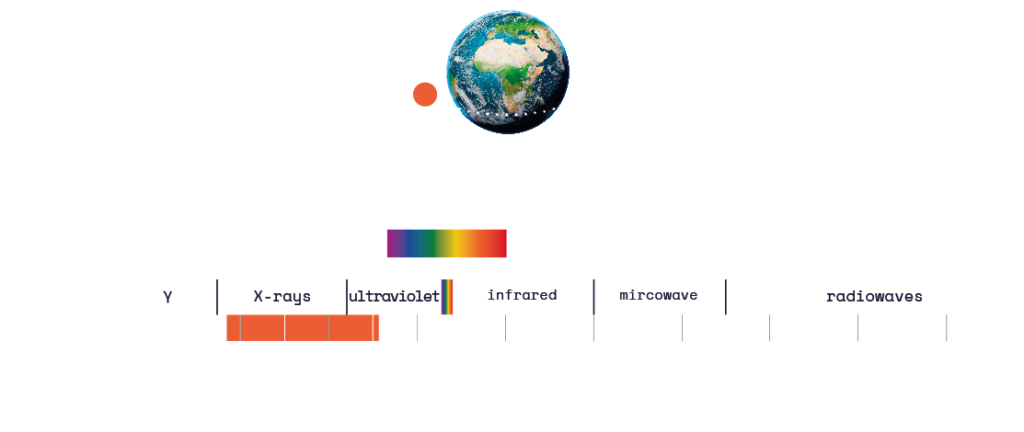
The scientific instrumentation on BeppoSAX consisted of the Wide Field Cameras (WFCs)-built by SRON-and the Narrow Field Instruments (NFI). The WFCs operated in the X-ray range between 0.04 and 0.6 nm. Although sensitivity was limited, the WFCs had a large field of view. The NFIs were intended for focused observations of specific X-ray sources, to measure mainly the broadband spectrum.
The main scientific feature of the BeppoSAX mission was its broad spectral coverage, from 0.006 to 12 nm, meaning that light particles could be observed with energies greater than 200 keV.
BeppoSAX was developed within a consortium of institutes in Italy and the Netherlands, together with ESA’s Space Science Department. There was a collaboration with the Max Planck Institute for Extraterrestrial Physics for X-ray mirror testing and calibration of the concentrator/spectrometer system. Prime contractors for the space and ground segments were Alenia Spazio and Telespazio, respectively.



